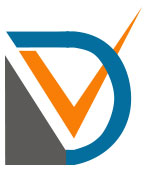Capillaries are an essential part of the blood tonerin apteka gemini circulation system, in charge of carrying blood back to the heart. They create a network of vessels, functioning alongside arteries and also veins, to ensure the appropriate performance of the body. Capillaries play an important duty in preserving a healthy blood flow, carrying oxygen-depleted blood from the body’s cells back to the heart and also lungs for replenishment.
In this post, we will check out the framework and function of blood vessels, their types, and the typical problems related to them. Understanding the complexities of veins is important for maintaining a healthy circulatory system and also general health.
The Structure and also Feature of Veins
Blood vessels have a distinctive structure that establishes them apart from other capillary. Unlike arteries that lug oxygen-rich blood away from the heart, capillaries transfer oxygen-depleted blood back to the heart. The walls of blood vessels are thinner as well as less flexible, permitting them to fit the reduced pressure of deoxygenated blood as well as facilitate its return trip.
Within the wall surfaces of veins are tiny shutoffs that act as one-way gates, protecting against the backward circulation of blood. These shutoffs play a vital function in preserving correct blood circulation, especially in the limbs where blood must battle versus gravity to go back to the heart. When the muscles surrounding the capillaries agreement, they assist drive the blood onward, as well as the valves make certain that it streams in the appropriate direction.
- Shallow Blood vessels: These veins lie near the surface area of the skin as well as are visible to the nude eye. They are accountable for draining pipes blood from the skin and also surface cells.
- Deep Blood vessels: Deep capillaries are located within the muscle cells and are responsible for lugging a significant part of the body’s blood quantity. They run alongside the arteries as well as are generally situated in sets, with one blood vessel going along with each artery.
The biggest vein in the body is the vena cava, which includes two main branches: the premium vena cava and the substandard vena cava. The exceptional vena cava brings deoxygenated blood from the upper body, consisting of the head, neck, arms, as well as upper breast, back to the heart. The substandard vena cava carries blood from the lower body, consisting of the abdominal area, hips, and also legs, back to the heart.
Typical Blood Vessel Problems
Capillaries are at risk to numerous problems that can affect their function and health and wellness. Some typical capillary problems include:
- Varicose Veins: Varicose veins are enlarged as well as twisted blood vessels that usually look like blue or purple bulges on the surface of the skin. They occur when the shutoffs within the blood vessels damage or come to be harmed, triggering blood to swimming pool and capillaries to increase. Varicose blood vessels are most frequently located in the legs as well as can create discomfort, pain, and also cosmetic issues.
- Deep Vein Thrombosis: Deep capillary thrombosis (DVT) is a condition characterized by the development of blood clots in the deep blood vessels of the legs. These embolisms can partially or entirely block blood flow, causing pain, swelling, and also potentially lethal issues if the clot removes and also takes a trip to the lungs.
- Crawler Veins: Crawler capillaries resemble varicose blood vessels however are smaller sized and also closer to the surface of the skin. They usually appear as red or blue web-like patterns and also are typically located on the legs as well as face.
- Persistent Venous Lack: Persistent venous insufficiency (CVI) takes place when the shutoffs in the blood vessels are damaged as well as fall short to work correctly. This problem results in bad blood circulation, triggering signs such as leg swelling, discomfort, and abscess.
Final thought
Veins are an important component of the circulatory system, in charge of returning deoxygenated depanten gelis blood back to the heart. Recognizing the structure and function of veins is crucial for keeping a healthy and balanced blood circulation system. It is very important to be familiar with common vein conditions such as varicose capillaries, deep blood vessel apoplexy, spider veins, and chronic venous deficiency. Examination with a health care professional can offer support on safety nets and proper therapies to make sure optimum vein health and also overall health.
By looking after your veins, you are caring for your cardiovascular wellness, advertising proper blood circulation, as well as reducing the risk of possible problems connected with capillary conditions.

